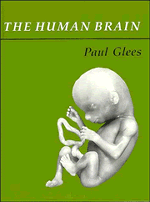Book contents
- Frontmatter
- Contents
- Preface
- 1 Introduction to brain research
- 2 Evolution of the nervous system
- 3 Fine structure of the nervous system
- 4 The nature and transmission of the nervous impulse
- 5 Glia, cerebral blood vessels and neurons
- 6 Cerebral blood and cerebrospinal fluid systems
- 7 The cerebral hemispheres
- 8 The spinal cord
- 9 The brainstem and cerebellum
- 10 The hypothalamus and the autonomic nervous system
- 11 Olfaction and taste
- 12 The auditory system
- 13 Vision and visual pathways
- 14 Touch, pain and proprioception
- References
- Index
1 - Introduction to brain research
Published online by Cambridge University Press: 31 October 2009
- Frontmatter
- Contents
- Preface
- 1 Introduction to brain research
- 2 Evolution of the nervous system
- 3 Fine structure of the nervous system
- 4 The nature and transmission of the nervous impulse
- 5 Glia, cerebral blood vessels and neurons
- 6 Cerebral blood and cerebrospinal fluid systems
- 7 The cerebral hemispheres
- 8 The spinal cord
- 9 The brainstem and cerebellum
- 10 The hypothalamus and the autonomic nervous system
- 11 Olfaction and taste
- 12 The auditory system
- 13 Vision and visual pathways
- 14 Touch, pain and proprioception
- References
- Index
Summary
For the last twenty years considerable interest has been directed towards brain research. One of the main reasons for this is the concentration by medical researchers on particular organs with the aims of understanding the total functioning of such organs and of investigating the possibility of their replacement by younger and more efficient units. Kidney and heart transplantation are now practised widely and there has been some success in overcoming initial difficulties caused by organ rejection. One problem is whether the experience gained with these organs could be applied to the central organ, the brain. Let us first consider the technical aspects. The multiple nervous connections that carry sensory input to the brain and outgoing commands to the periphery, the cranial nerves, mean that neural reconnection is biologically and technically impossible (for reasons discussed later). A second problem would be the rejoining of blood vessels. Microsurgery would make this technically feasible, but the brain's continuous need for oxygen would hardly allow sufficient time for transplantation, even if the replacement brain were cooled. But the real problem lies elsewhere. The brain represents the signature of a genetically unique person: the individual fate and memories of that particular person, his or her character. In short, the existence of individual life history makes the idea of a cerebral replacement a foolish and worthless concept.
The idea of brain transplants apart, research on brain structure and function has made great leaps forward since the development of methods for analysing morphological and functional aspects of the brain. Comparative biology and evolutionary principles soon showed that the human brain shared common features with the brains of all vertebrates.
- Type
- Chapter
- Information
- The Human Brain , pp. 1 - 2Publisher: Cambridge University PressPrint publication year: 1988



